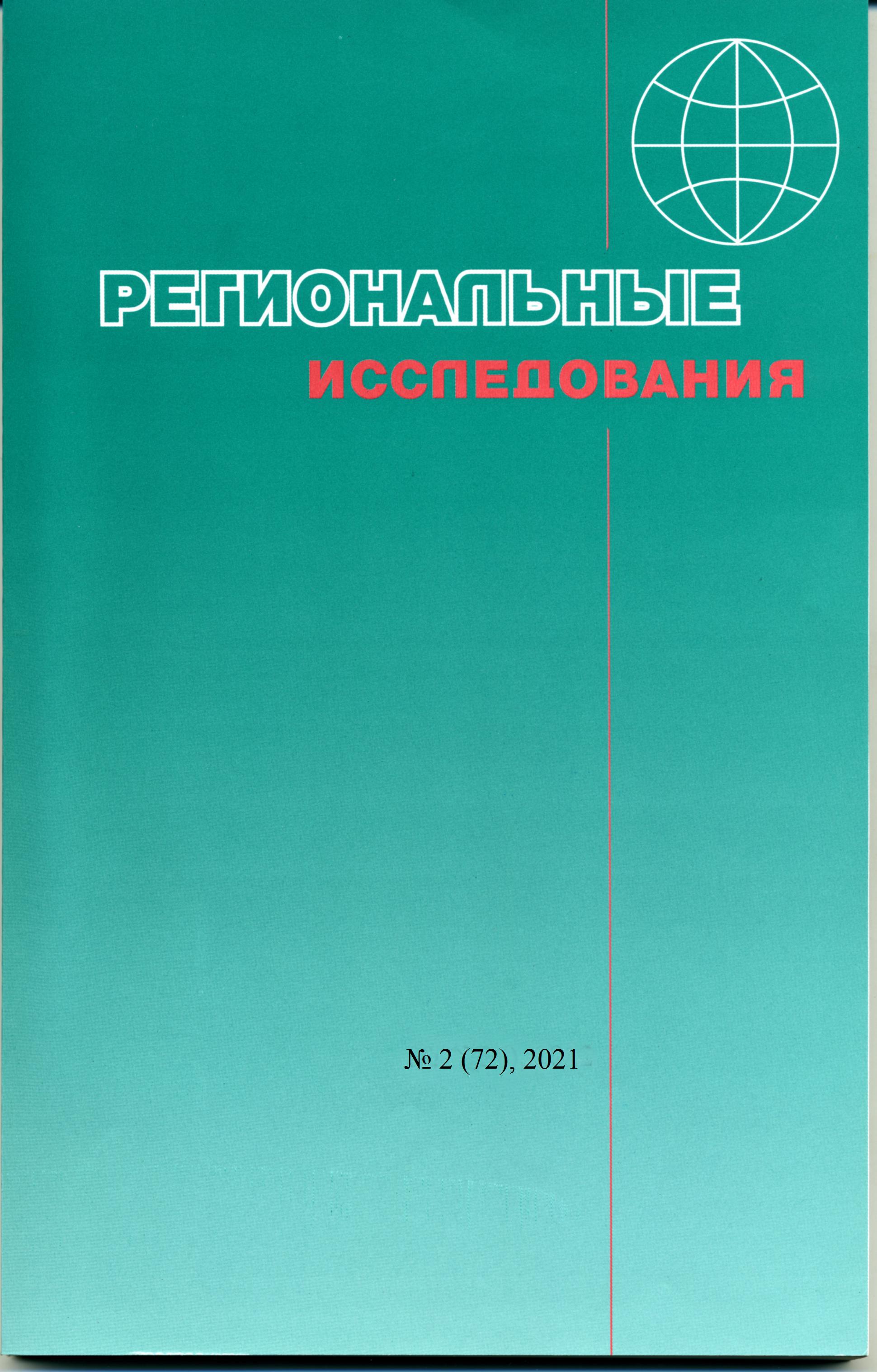Sinitsyn N.A. Zoning of the Russian-Belarusian border area using the method of demographic potential
DOI:
https://doi.org/10.5922/1994-5280-2021-2-4Keywords:
zoning, gravity model of demographic potential, surface of demographic potential field, hierarchical cluster analysis, city, inter capital space, Russia, BelarusAbstract
This article is dedicated to the question of demographic potential surface zoning. The area of study is inter capital space between Moscow and Minsk. Three surfaces were analysed for three census years – 1897, 1989 and 2010. A method for zoning of demographic potential surface has been developed. It is based on the decomposition of the surface into separate terms. Terms are the induced potentials of settlements. It is possible to identify groups of points with a similar structure of induced potentials with the help of hierarchical cluster analysis. Such clusters will be the regions of demographic potential surface. Five types of regions were defined – spheres of dominance, zones of influence, areas of gravity, residual regions and hinterlands. There are about 20 regions on the surface of demographic potential of the inter capital region of Russia and Belarus. Its territorial structure consists of 3 large parts. The hinterlands of Moscow and Minsk are areas of the potential surface, where these cities have the largest share in the structure of the induced potential of clusters. “Real” inter capital space are areas of the potential surface, where the largest share in the structure of the induced potential of clusters belongs to any other cities, except capitals. The main processes of the evolution of demographic potential are following: expansion of the hinterlands of Moscow and Minsk, complication of the Minsk’s hinterland structure, disappearance of Roslavl’s hinterland, growth of the Gomel’s hinterland, reduction of the Bobruisk’s hinterland, formation of the residual area centered in the Polotsk agglomeration, disappearance of the residual area in the Mogilev and Bryansk regions.
Financing
The study was carried out within the framework of a grant from the Russian Foundation for Basic Research (project No. 20-55-00002 "Inter-capital as a factor socio-economic development of the Russian-Belarusian border region ").
References
Евтеев О.А. Карта потенциала поля расселения как особый вид изображения населенности территории // Вестн. Моск. ун-та. Сер. 5: География. 1969. № 2. С. 72-76.
Евтеев О.А. Ковалёв С.А. Население и трудовые ресурсы // Социально-экономические карты в комплексных региональных атласах. М.: Геогр. ф-т МГУ, 1968. С. 67–90.
Земцов С.П. Инновационный потенциал регионов России: дисс. … канд. геогр. наук: 25.00.24 / МГУ им. М.В. Ломоносова. М., 2013. 233 с.
Земцов С.П., Бабурин В.Л. Оценка потенциалов экономико-географического положения регионов России // Экономика региона. 2016. № 1. С. 117–138.
Земцов С.П., Бабурин В.Л., Баринова В.А. Как измерить неизмеримое? Оценка инновационного потенциала регионов России // Креативная экономика. 2015. № 1 (97). С. 35–52.
Лейзерович Е.Е. Рекомендации по районированию территории СССР для целей расселения и районной планировки. М.: Стройиздат, 1988. 216 с.
Медведков Ю.В. Экономгеографическая изученность районов капиталистического мира. Вып. 2: Применение математики в экономической географии. М.: ВИНИТИ, 1965. 162 с.
Колосов В.А., Руденко Л.Г., Тикунов В.С., Герцен А.А., Головина Е.Д., Зотова М.В., Себенцов А.Б. Атласная информационная система российско-украинского приграничья // ИнтерКартоИнтерГИС. Вып. 20. Белгород: Константа, 2014. С. 22–24.
Тикунов А.В. Планетарные потенциалы социально-экономических явлений // Изв. РАН. Сер.геогр. 2003. № 6. С. 51–57.
Тикунов В.С., Яблоков В.М. Атласная информационная система Байкальского региона // Интер-КартоИнтерГИС. Вып. 19. Курск, 2013. С. 197–202.
Фролов Ю.С. Потенциал поля расселения и его картирование // Вестн. Ленингр. ун-та. Сер.геол. и геогр. 1975. № 24. С. 110–123.
Braimoh A.K., Onishi T. Spatial determinants of urban land use change in Lagos, Nigeria // Land Use Policy. 2007. № 24 (2). P. 502–515.
Jones B. Assessment of a gravity-based approach to constructing future spatial population scenarios // Journal of Population Research. 2014. № 31 (1). P. 71–95.
O’Kelly M.E., Horner M.W. Aggregate accessibility to population at the county level: U.S. 1940–2000 // Journal of Geographical Systems. 2003. № 5(1). P. 5–23.
Middleton N., Gunnell D., Frankel S., Whitley E., Dorling D. Urban–rural differences in suicide trends in young adults: England and Wales, 1981–1998 // Social Science & Medicine. № 57 (7). P. 1183–1194.
Rich D.C. Potential Models in Human Geography. Norwich: University of East Anglia. 1980. 38 p.
Reilly W.J. Methods for the study of retail relationships // University of Texas Bulletin. 1929. № 2944. P. 7–50.
Stewart J.Q. The Gravity of the Princeton family // Princeton Alumni Weekly 1940. Vol. 40. P. 409–410.
Stewart J. Q. An inverse distance variation for certain social influences // Science. 1941 Vol. 93. P. 89– 90.
Stewart J.Q. Warntz W. Macrogeography and Social science // Geographical Review. 1958. Vol. 48. № 2. P. 167–184.
Warntz W.A. New map of the surface of population potentials for the United States, 1960 // Geographical Review. 1964. Vol. 54. № 2. P. 170–184.

